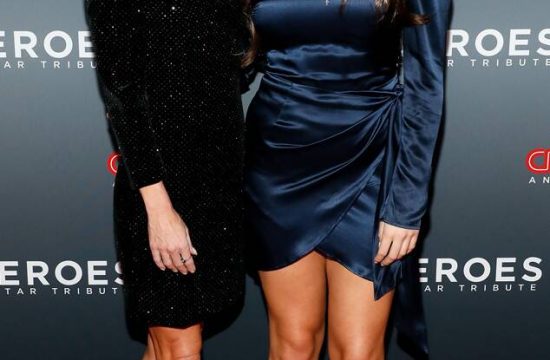
In the 1980s, the American art world was radically transformed by the drastic expansion of the gallery system, fueled by well-heeled collectors of contemporary work, and by a dramatic change in the role of commercial art writing.
In the late 1970s, when I first started reading Artforum, and, later, writing for that journal, it was a slim, scholarly publication focused on contemporary art and the history of modernism. In 1980, rather suddenly, it became the advertisement-filled publication that we know today.
Thanks to Ingrid Sischy, who was editor from 1980 to 1988, Artforum took a passionate interest in fashion, in film, and in pop music. The other publications that I read and wrote for in the 1980s and ‘90s, Arts Magazine, Art in America, Art News and the Italian journal Tema Celeste, remained narrowly focused on visual art. That perhaps explains why none them have survived, at least in their original manifestations. Only Artforum alone has prospered. For that reason alone, this collection of Sischy’s essays is of great interest to anyone who would understand our present day commercial art world.
At Artforum, Sischy played a key role in creating and nurturing that peculiar alliance between the worlds of art, fashion, and celebrities, which defines our visual culture. Then she went on to be editor of Interview (1989–2008) and a contributing editor to Vanity Fair (1997–2015).
Nothing Is Lost: Selected Essays of Ingrid Sischy (Knopf, 2018) has blurbs from Elton John and Graydon Carter, the former editor of Vanity Fair, themselves celebrities who are unlikely champion the writings of other Artforum critics. It also has essays about some artists — Francesco Clemente, Jeff Koons, James Rosenquist — and a number of photographers, most especially Robert Mapplethorpe and Cindy Sherman, as well as accounts of fashion designers and movie stars.
Always a marvelously lucid writer, Sischy was very good at getting her subjects to trust her, and her reportage is highly readable, even if you are not much interested in these famous people. I wanted to review Nothing Is Lost because I am interested in the recent history of the art world. But not until I got well into the text, which is more than 500 pages long, did I realize what is odd: Sischy offers surprisingly little discussion of the history of visual art.
Rather, what defines her sensibility is the link between art and fashion, and the frank celebration of artists and designers, most of them very prosperous indeed, as media stars, coupled with an almost exclusive interest in the immediate present — as if the history of art (even the history of mid-20th-century modernism) barely exists for her. The exception, which proves this rule, is her discussion of the 19th-century photographs of Lady Hawarden, which serve as a foil for Sischy’s account of Cindy Sherman.
Charles Baudelaire may have linked modernism and fashion in the 1860s, but for him that was a minor theme. And Andy Warhol imported the current trends in fashion and film into the art world; that, after all, is why Sischy was a good editor for his journal, Interview. But he had a real interest in, and a concern for, art history. Sischy’s distinctively contemporary worldview, therefore, was novel. She really changed the way we think about contemporary art.
Sischy’s focus on the immediate present meshes with two related, equally important qualities of her writing: her complete lack of theorizing about visual art, and her disinterest in moralizing.
When she gets Jasper Johns to talk at length about James Rosenquist, you see how visually attentive she can be. But generally she is more interested in real estate. These essays have no critical perspective on the politics of the art world, not even on the now dated left-wing politics which remained important for many writers. For her, apart from parochial questions about Federal funding for Mapplethorpe, these matters simply aren’t a concern.
Hence her uncritical celebration of wealth, as in the accounts of the homes of Julian Schnabel and Calvin Klein. Compared with her, Warhol, who now and then did express political ideas, was a progressive social thinker. Sischy deals so successfully with Jeff Koons, Robert Mapplethorpe, and Cindy Sherman because they all are centrally concerned with celebrity.
In saying this I don’t mean to moralize about her writing, which I find deeply engaging. Indeed, inspired in part by her model, for a time I too found the parallels between fashion and visual art very interesting. Ultimately, however, I do think that these ways of thinking have not aged well. But I am saying this, I must stress, not as a critique of her career or, still less, of her transformation of Artforum, but as a review of this selection of her writings, a book which will provide one essential starting point for future commentaries.

Gary Indiana, a gifted wordsmith, is capable of summarizing exhibitions by very varied artists in terse, evocative sentences. Vile Days: The Village Voice Art Columns 1985–1988, edited by Bruce Hainley (Semiotext(e), 2018) collects short reviews, many about artists who have apparently disappeared, that are all worth reading.
Indiana is compulsively quotable. Being reliably aggressive and, often enough, ferociously malicious does not prevent him from expressing warm enthusiasm for a surprising variety of artworks: About Donald Judd, for example he writes: “Perfection, even when it is the perfection of nothing, appeals to the desire for absolutes, finalities, ideal standards” (324).
Indiana is a master of the one-liner: “Like the late novels of Céline, many Mapplethorpe pictures mirror experiences that would normally compel other responses than aesthetic ones” (71). His review of a Sherrie Levine show at Mary Boone encapsulates an entire theory of art exhibitions: “Levine’s work, in this show, functions as a side effect of its container” (461).
He is capable of constructing suggestive, erudite comparisons: “If George Condo is the Godard of the painted canvas, Philip Taaffe is its Hitchcock, and possibly its Bresson” (407), and his forceful political interpretations can be admirable. At the conclusion of his account advocating the removal of Tilted Arc he writes: “In case Richard Serra never heard this from anybody else, I’d like him to hear it from me: lie down with dogs, get up with fleas” (58). But above all, Indiana is fiercely sardonic. About Warhol, he writes: “Andy was a working boy. He worked hard, he made his money, they buried him with the blessing of his church. A saint for all the wrong reasons. And isn’t that what America is all about?” (422).
Indiana describes Sischy’s Artforum in plausible, revealing terms. Recognizing that she did indeed transform the journal, after allowing that he himself liked and admired her, he says that the excitement she generated “was fatally linked to the notion of hitting the number each month, catching all the straws in the seasonal wind, being there when it happened — and, finally, inevitably, making it happen” (345–6). Artforum became a record, or creator, of the Zeitgeist. But the exciting idea that the arrival of this or that young artist or novel way of thinking about the visual marked a cultural transformation was impossible to sustain.
On June 28, 1988, Indiana’s review begins: “This is my last column for the Voice. Take it or leave it. I’ve had my fun and now it’s time to do something else. If you didn’t like this column, now you’ll have to find something else to complain about” (569).
Do I agree with his aesthetic judgments? Often I do not! Well then, do I accept his worldview? Certainly not! But am I bored by reading him? Never, not even for an instant. It’s not surprising that after four years on the ramparts, he exhausted his inspiration and quit while he was ahead.
Nothing Is Lost: Selected Essays of Ingrid Sischy and Vile Days: The Village Voice Art Columns 1985–1988 are available on Amazon and other online retailers.











